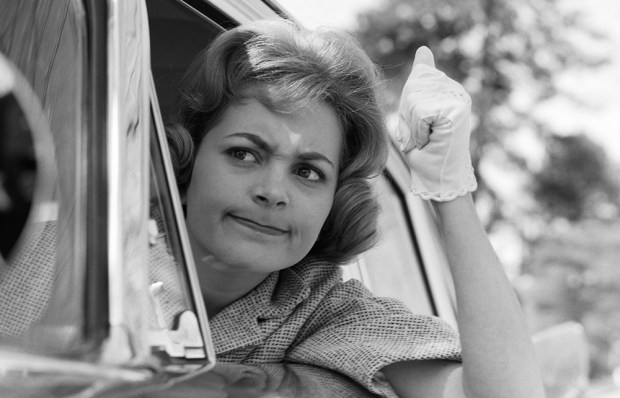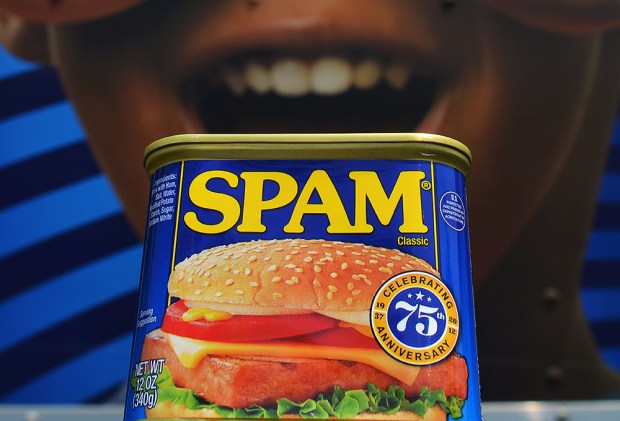Following the BLM protests in the US, which were seized on by the Aussie media and in schools, Disney declared its commitment to combat the ubiquitous enemy known as ‘racism’ by scouring its back catalogue for ‘stereotypes’. Popular characters in beloved films suddenly inspired warnings informing viewers of supposedly distressing content; characters such as King Louie in The Jungle Book, the crows in Dumbo, and even Si and Am, the Siamese cats in Lady and the Tramp.
Disney have now had a change of heart. The company appears to be tired of losing billions of dollars and alienating fans by infusing politically correct nonsense into family-friendly entertainment, and they are subtly altering course. The first step towards redemption is to quietly remove trigger warnings from some of the classic movies on its streaming service. The announcement comes after CEO Bob Iger said the company’s priority must be to ‘entertain first’ and ‘not to advance any kind of agenda’, after a string of ‘identitarian slop’ movies performed disastrously at the box office.
It took a long time to recognise the problem that numerous critics had been pointing out for years, but it’s better late than never. It’s an implied acknowledgement by the House of Mouse that spending years promoting diversity, equity and inclusion initiatives was a complete waste of time and money.
The story has gone relatively unnoticed in the mainstream press. From a public relations standpoint, I believe they hoped this would be the case. In fact, the more I think about it, the more logical it seems. Disney, like most multinational corporations, refuses to publicly admit it has made a mistake and must reverse course. Like any savvy businessman, they can gauge how the wind is blowing and quietly change positions – if questioned by journalists, they will claim that this was always their intention. Less of a wind and more a Category 5 hurricane. And its effects can be felt in the entertainment industry. The vibe shift occurred when Donald Trump returned to the White House and took an axe to the ridiculous DEI initiatives infecting the federal government.
From books to plays to movies, trigger warnings have been slapped on everything in recent years. In 2021, London’s Globe Theatre warned audiences that Romeo & Juliet ‘contains depictions of suicide, moments of violence, and references to drug use’. Viewers of Wicked were warned the film contained discrimination against a ‘green-skinned woman’ and the persecution of ‘talking animals’.
Speaking of talking animals, the most absurd example has to be Bluey. Several episodes of the Australian animated children’s television show have been hit with trigger warnings. That’s right, the little blue heeler from Brisbane is traumatising a generation of Australian children. While the show occasionally presents difficult themes for children to deal with, such as death, the best approach to handle this is to enable youngsters to ask questions and make their own conclusions. The show provides an environment for children to experience a variety of emotions, as well as a starting point for discussions with parents about these issues, which promotes and develops empathy. You don’t preload this by lecturing audiences on how to participate emotionally with a film. Prefatory warnings suck the spontaneity out of art and reflect a strong distrust in public intelligence; they are created by cultural puritans who believe people are incapable of forming an opinion unless they are force-fed an approved meaning beforehand.
Trigger warnings, like all moronic concepts, originated on elite university campuses. In 2017, Monash University issued trigger warnings for fifteen courses containing ‘emotionally confronting material’. The intention behind them, supporters argued, was to offer students advance notice of potentially distressing content, particularly for those who have experienced trauma. Students were soon being warned about every potentially unsettling facet of human nature as the ‘great awokening’ began. The ideological capture of academia has transformed universities into creches for politically correct babies. In 2016, the student union at Melbourne’s La Trobe University ruled that trigger warnings should be used at meetings for body-image issues, food, spiders and misophonia (fear of sounds).
From a therapeutic standpoint, this is a terrible method to help trauma victims. We should be exposed to all views and beliefs, rather than deterred from engaging with them. As Jonathan Haidt points out, ‘The very idea of helping people with anxiety disorders avoid the things they fear is misguided.’ An expanding body of evidence suggests that trigger warnings are counterproductive. In 2023, a scientific study led by Australian researcher Victoria Bridgland concluded they did not deter people from viewing content classified as triggering – in fact, people were more likely to engage with it. Bridgland et al. determined that trigger warnings are ‘fruitless’ and ‘should not be used as a mental health tool’.
Far from being an innocent message, trigger warnings are an example of the soft bigotry of low expectations. They imply that certain ethnic minorities are predisposed to offence and are incapable of understanding how movies made a century ago may conflict with contemporary moral norms. This condescending attitude – that African-Americans require special protection – is at odds with the views of the general public. According to a major US study, ethnic minorities are more likely to be against political correctness than white Americans.
Art is supposed to shock. Many of the finest works of art would lose their force if we didn’t have access to the complete gamut of human emotions. It’s a Wonderful Life would have a totally different influence on you without depression. Emotion is an integral part of the human experience. Drama is built on the rich and multiple ways in which people encounter and cope with the emotions of others.
I’m glad Disney has finally seen sense. Yet, removing trigger warnings will not solve everything. To be considered for an Oscars Best Picture nomination, films must meet new diversity and inclusion standards. Nonetheless, it’s a positive step forward. But the question remains: Is the pushback from corporations against identity politics sincere? It is a tale as old as time.
Got something to add? Join the discussion and comment below.
You might disagree with half of it, but you’ll enjoy reading all of it. Try your first month for free, then just $2 a week for the remainder of your first year.













